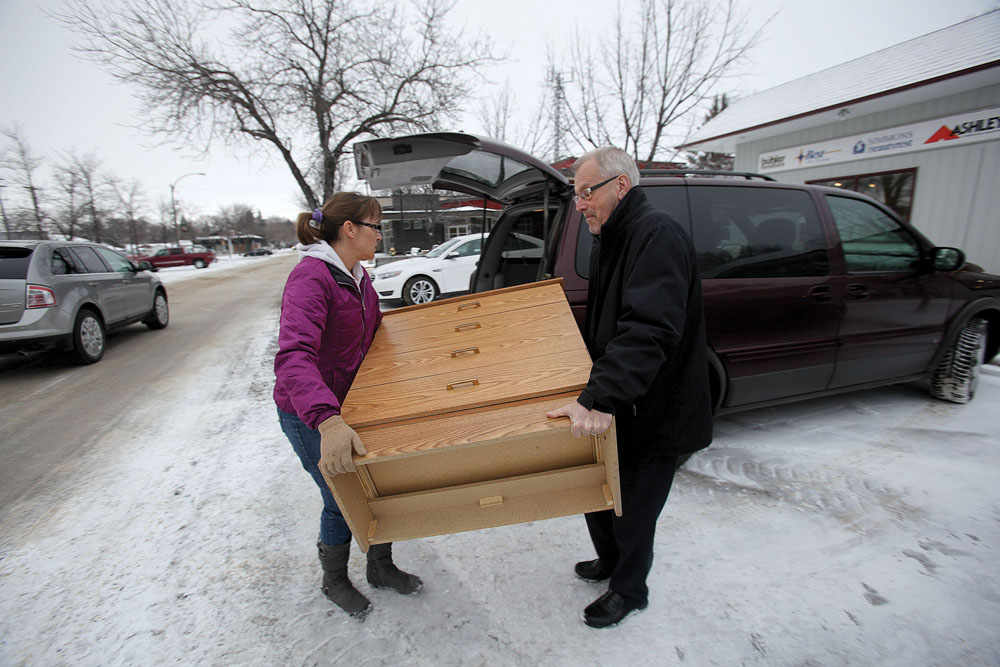Word the province will build 150 more housing units for Manitoba’s senior population is good news, say economic development officers who know their burgeoning numbers of 55-plus need it.
But they also say 150 more homes for low-to moderate-income renters will make barely a dent in what’s become a critical housing shortage in the province.
“It’ll be a great thing… if we can get it,” said Tanis Chalmers, the EDO for the Town of Melita of the government’s announcement last week of $10 million toward more affordable housing for seniors.
Read Also

Giant Canada geese have gone wild in Manitoba
Giant Canada geese are seemingly everywhere and can be fine table fare for local hunters, but 70 years ago, they were borderline extinct.
COMPLICATIONS
Chalmers knows the complications involved in bidding for it – both in creating the local partnerships needed to access it, as well as the competition there’ll be across the province for the resources.
It isn’t just rural seniors hunting for suitable housing these days.
Young families, employees in sectors like the oil industry, new professionals coming to work and live in Manitoba’s small communities all have stories to tell about the pricey and dicey job of finding a suitable place to live.
“There is a high demand for housing in all different levels,” she said, adding that includes demand for both rental homes and homes to purchase. In Melita condos and duplexes have been built and more are coming to meet the need.
But they are really feeling the housing pinch.
“We do not have one residential lot for sale anymore,” said Chalmers.
A parcel of land adjacent to the town has been surveyed to develop and build new homes. But the project has not yet attracted a developer.
Neepawa is also scrambling to create the housing for its growing population needs.
“Housing is our No. 1 priority right now. I’ll take anything we can get right now,” said Rick Donaldson, the town and RM of Langford’s EDO.
NEW RESIDENTS
In the space of about two years, about 800 new people have come to live in Neepawa, most being staff recruited to work at HyLife Foods, formerly known as Springhill Farms hog-processing plant.
They’ve lived in the motel rooms and basement suites they could rent until now, but many are now ready to settle in Neepawa and bring their families over to Canada.
“We need all types of housing,” said Donaldson, adding that the real demand is for homes priced at $250,000 or less. Developers recently built a 10-unit row housing and pre-sold every $110,000 unit within eight weeks.
Neepawa’s housing shortage isn’t due to a shortage of developers, but rather a lack of places to develop, he said.
“My phone rings off the hook from developers right across this country who have heard of the pressures we’re dealing with… and they want in. But we’re landlocked. Most of what’s around us is agricultural land and we have to go through a process of zoning.”
The town can also ill afford the major capital investment required to service any new land it does rezone, he said.
KEY ISSUES
Tom Carter, a professor of geography and Canada Research chair in urban change and adaptation at University of Winnipeg, has recently published a paper for the Rural Development Institute in Brandon documenting the rural housing shortage.
Lack of serviceable land, combined with a shrinking inventory of lots in town, plus the fact many private developers continue to build for high-end markets are some of the key issues, writes Carter.
Certainly, lack of affordable rental housing for a senior population is also holding things up.
“The market in many centres can be classified as “constipated,” he writes inHousing Strategies for Immigrants in Rural Manitoba.
“There is too little movement. People cannot get into rental or modestly priced ownership units. People in modestly priced ownership units who may want to move into rental cannot, so these units are not freed up for purchase. Those with enough money can buy in at the high end.”
That kind of thing is what’s affecting house-hunting young professionals drawn to rural Mantioba, say other EDOs.
AFFORDABLE
Knowing the limited availability of more modestly priced homes in Carman, local EDO Tyler King admits he “just lucked out” when he was able to find a place he liked after moving here four years ago.
Carman has had two major developments built in recent years, including a higher-end condominium development and a new retirement residence, which is freeing up more homes for sale. But young families and young professionals find places they can afford relatively hard to come by.
“I don’t know if that’s turned away a lot of people, but it has made it more challenging for some to find what they need,” King said. “We just recruited a physician and they had to look at quite a number of homes before they found what they needed.”
The Association of Manitoba Municipalities passed a resolution last fall calling for a provincial- federal task force with municipal and private-sector participation to co-ordinate and speed up the delivery of new, affordable housing programs to address the rural housing shortage.
In some ways, this is the kind of problem you want to have, says Liza Park, the EDO at Deloraine. In just a few years, Deloraine has gone from being a place where homes sold at auction for a few thousand dollars to one where oilfield workers now live year round in fifth wheels. The housing market is so tight more eye buying a ready-to- move and whatever parcels of farm land are available, than trying to build, or buy in town.
“We have very few houses for sale,” she said. “Ten years ago we would have had 50.”
———
“Themarketinmany centrescanbeclassified as‘constipated.’”
– TOM CARTER, GEOGRAPHY PROFESSOR AND CANADA RESEARCH CHAIR IN URBAN CHANGE AND ADAPTATION AT THE UNIVERSITY OF Winnipeg WRITING IN HOUSING STRATEGIES FOR IMMIGRANTS IN RURAL MANITOBA















